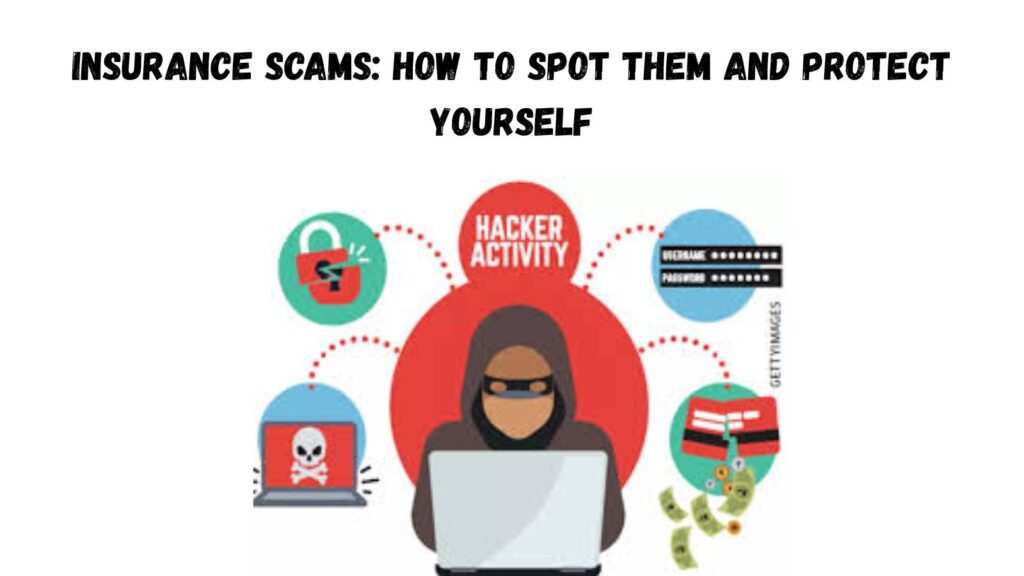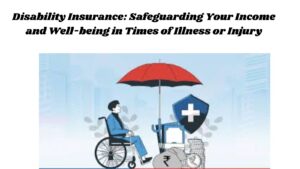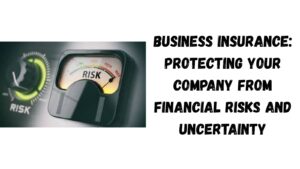Insurance is meant to provide a safety net in times of need, offering peace of mind and financial security. Fraudsters often go after vulnerable consumers. This happens in an industry filled with complex contracts and personal trust.

In this guide, we’ll explore different insurance scams. You’ll learn to spot the warning signs and get tips to protect yourself. By the end of this article, you’ll be armed with the knowledge you need to ensure you’re never the victim of an insurance scam.
Types of Insurance Scams
Contents
- 1 Types of Insurance Scams
- 2 Red Flags: How to Spot an Insurance Scam
- 3 How to Protect Yourself from Insurance Scams
- 4 Fun Facts About Insurance Scams
- 5 Conclusion: Safeguard Your Insurance Against Scams
- 6 FAQs About Insurance Scams
- 7 How can I identify a fake insurance policy?
- 8 What should I do if I think I’ve been scammed by an insurance agent?
- 9 Can I get my money back if I’ve fallen victim to an insurance scam?
- 10 Are online insurance scams common?
- 11 How can I protect myself from phishing insurance scams?
Insurance fraud is a pervasive issue, and scammers use a variety of tactics to exploit consumers. Understanding these tactics is crucial for protecting yourself. Here are some of the most common types of insurance scams:
A. Fake Insurance Policies
A common insurance scam is when fraudsters sell fake or non-existent policies. These scammers may create fake websites, send emails, or even set up phony agencies to lure in unsuspecting victims. Once a consumer buys the policy, the fraudster disappears with the money, leaving the consumer without any coverage.
Example: In 2019, State authorities in New York warned consumers about a man who was selling fake life insurance policies online. He had set up a website that appeared to be legitimate, offering policies from a non-existent company. Victims paid for the policies but were never able to make claims.
B. Phony Claims
Another common scam involves fraudulent claims. This can involve people or companies faking accidents, losses, or damages to get insurance money. For example, someone may falsely claim their car was involved in an accident or that their home was damaged in a fire, when in fact, no such event occurred.
Real-Life Example: In 2018, A Texas man was arrested for staging a car accident to collect insurance money. The individual fabricated a story of a crash involving multiple vehicles and filed for damages. After further investigation, it was revealed that the accident never took place. This is a classic example of how scammers manipulate the insurance system.
C. Premium Diversion
Some dishonest agents or brokers might keep policyholders’ premiums. They do this instead of sending the money to the insurance company. The policyholder believes they are covered, but when they file a claim, they find that their coverage does not exist. This type of scam is especially common with smaller or less-regulated insurance agencies.
In 2020, California insurance fraud investigators found a group of agents. These agents took premiums from customers but didn’t send the money to the insurance companies. Many consumers were left without coverage and faced financial difficulties when they needed to file claims.
D. Phishing Scams
Phishing scams use fake emails or calls. They look like they are from real insurance companies or brokers. Scammers try to steal personal information. They want details like Social Security numbers, bank information, and credit card data. Then, they use this info for identity theft or to charge fake premiums.
In 2021, the FTC warned about a phishing scam aimed at Medicare recipients. Scammers pretended to be Medicare reps. They offered fake health insurance plans for personal details. Many elderly consumers fell victim to the scam, resulting in identity theft and financial loss.
E. Fake Health Insurance Plans
Health insurance scams are rampant, especially during open enrollment periods. Scammers may offer “low-cost” health plans that promise extensive coverage, but in reality, these plans are either worthless or extremely limited. These plans often skip important healthcare services. This leaves people facing high medical bills when they need treatment.
In 2018, the FBI looked into a scam across the country. Scammers sold fake health insurance to unsuspecting consumers. They promised affordable premiums but provided no real coverage. Many victims were left with massive medical bills, and some lost their life savings in the process.
Red Flags: How to Spot an Insurance Scam
Now that you’re familiar with common types of insurance fraud, it’s important to learn how to spot the red flags that signal you might be dealing with a scam. Here are several warning signs to look out for:
A. Unsolicited Calls or Emails
Scammers often reach out to victims via unsolicited calls, emails, or messages. Be careful if you get a surprise message about insurance products. It might claim to be from your current provider. Legitimate companies rarely offer policies or coverage through unsolicited contact.
Tip: Do not respond to unsolicited messages. Instead, contact your insurance provider directly through a verified phone number or website.
B. Unrealistically Low Premiums
If an insurance plan seems too good to be true, it probably is. Fraudsters often lure victims with promises of extremely low premiums for extensive coverage. If a policy offers much lower costs than others, it’s a red flag. Everyone wants affordable insurance, but be careful.
Tip: Get quotes from multiple insurance companies before making a decision. If the price is far lower than what other providers are offering for similar coverage, it’s a red flag.
C. Lack of Information or Documentation
If an insurance company or agent refuses to provide full details about a policy or can’t offer proper documentation, this is a major warning sign. Legitimate insurers provide clear contracts, full disclosure about terms, and readily available documentation.
Tip: Always ask for the official terms and conditions of the policy in writing. If an agent is hesitant to provide this, walk away.
D. Pressure to Act Quickly
Scammers create fake urgency to push you into quick decisions. This way, you might not understand the policy or do your research. If you’re pressured into buying insurance immediately, it’s a clear indication of a scam.
Tip: Take your time. A legitimate insurance company will never pressure you to sign up on the spot. Always take a day or two to think about it and review all the fine print.
E. Unlicensed Agents or Companies
Check whether the agent or company is properly licensed to sell insurance in your state. Unlicensed agents or companies are a huge red flag. In many countries, insurance agents need a license. Also, companies must register with the right regulatory bodies.
Tip: Verify the legitimacy of the insurance company or agent through your local insurance department’s website. If they are not listed, they may be operating fraudulently.
How to Protect Yourself from Insurance Scams
Now that you know how to identify the signs of an insurance scam, here are actionable steps you can take to protect yourself:
A. Research the Company
Before purchasing an insurance policy, take the time to research the company. Check if the company is licensed by your state’s insurance department. Also, look up their reputation on online reviews and consumer protection websites.
B. Review Your Policy Carefully
Always read your insurance policy thoroughly before signing. Pay attention to the fine print and ensure that it covers everything you need. If you have any questions, don’t hesitate to ask the insurance agent for clarification.
C. Avoid Giving Personal Information Over the Phone or Online
Don’t share personal details like your Social Security number or credit card info. Only do this over the phone or online if you’re sure the request is real. Scammers will often try to steal your personal information for fraudulent purposes.
D. Report Suspicious Activity
If you think you’re a target of an insurance scam, report it right away. Contact the Federal Trade Commission (FTC) or your local insurance regulator. Reporting scams helps protect others and may assist in catching the criminals involved.
Fun Facts About Insurance Scams
- Estimated Cost of Insurance Fraud: The National Insurance Crime Bureau (NICB) says insurance fraud costs the U.S. about $40 billion each year. This includes both personal and commercial insurance scams.
- Health Insurance Fraud: The FBI reports that health insurance fraud alone costs over $100 billion each year. This includes fraudulent billing by healthcare providers, fake claims, and other fraudulent activities.
- Top States for Insurance Fraud: California, Florida, and New York often lead in reported insurance scams. Their large populations and big insurance markets contribute to this trend.
Conclusion: Safeguard Your Insurance Against Scams
Insurance is a vital part of financial security, but it’s essential to protect yourself from fraud. To avoid insurance scams, be aware of common tricks. Spot red flags and take precautions. This way, you can protect yourself from fraudsters and ensure your coverage is real. Always do your research, read the fine print, and be cautious when dealing with unsolicited offers.
Insurance scams change over time. However, with the right knowledge and attention, you can outsmart scammers and protect your money.
The Future of Insurance: What Will Policies Look Like in 2030?
FAQs About Insurance Scams
How can I identify a fake insurance policy?
A fake insurance policy usually has no proper documents. It often has unrealistic premiums. Plus, it might come from an unlicensed agent or company. Always verify the insurer’s credentials.
What should I do if I think I’ve been scammed by an insurance agent?
Contact your state’s insurance department immediately and file a complaint. Also, consider reporting the scam to the Federal Trade Commission (FTC).
Can I get my money back if I’ve fallen victim to an insurance scam?
In some cases, if the scammer is caught, you may be able to recover your funds. However, it’s not always guaranteed. It’s important to act quickly.
Are online insurance scams common?
Yes, online insurance scams have become increasingly common. Always verify that the website is legitimate and look for secure payment options before purchasing.
How can I protect myself from phishing insurance scams?
Avoid clicking on links from unsolicited emails or phone calls. Contact your insurance provider directly on their official website. This way, you can verify any offers or claims.
This guide provides a comprehensive overview of how to spot and protect yourself from insurance scams. Stay informed and careful. This way, your financial security stays safe, and you can avoid the severe consequences of fraud.


